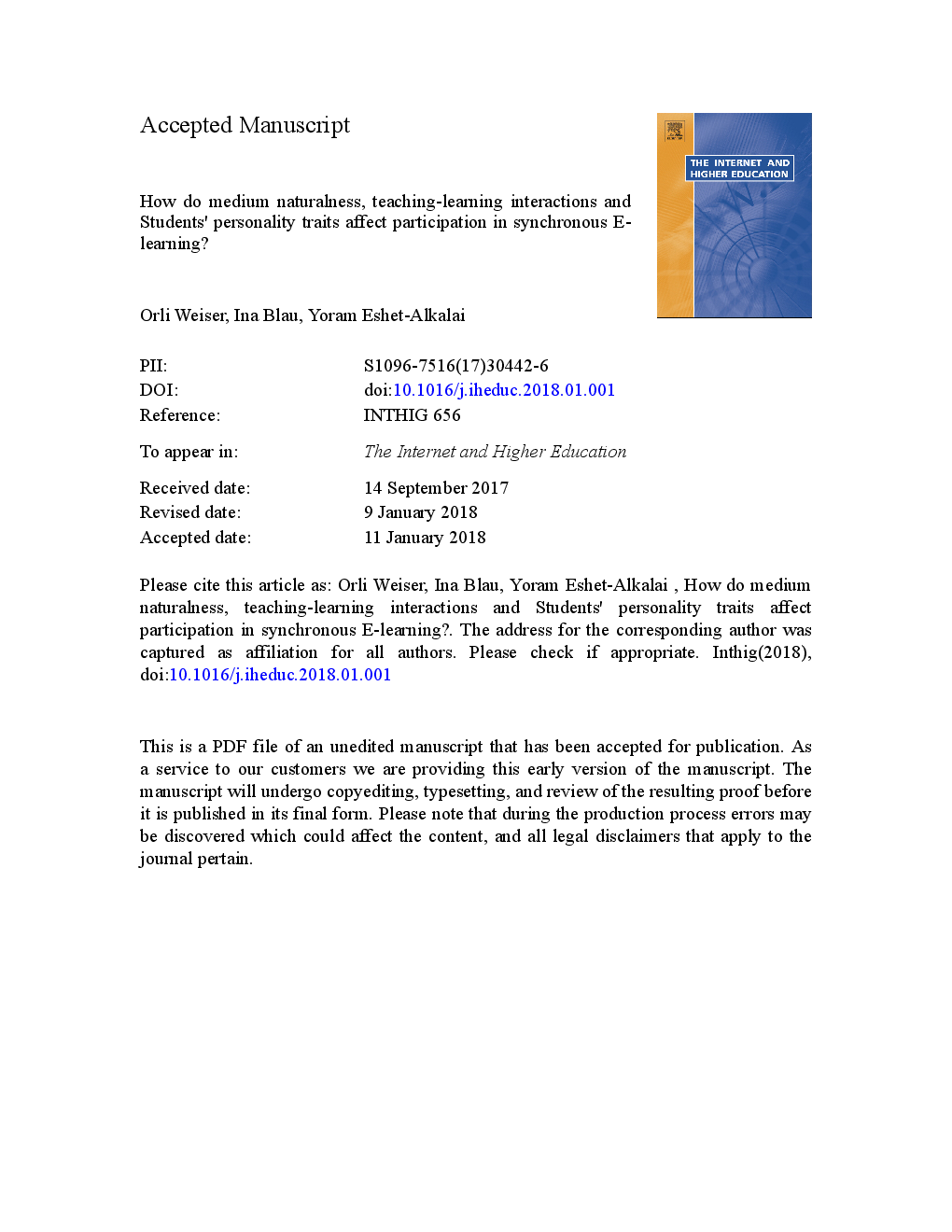ترجمه فارسی عنوان مقاله
چگونه طبیعت محیطی، تعاملات آموزشی و یادگیری شخصیتی دانشجویان، مشارکت در آموزش الکترونیک همزمان را تحت تاثیر قرار می دهد؟
عنوان انگلیسی
How do medium naturalness, teaching-learning interactions and Students' personality traits affect participation in synchronous E-learning?
| کد مقاله | سال انتشار | تعداد صفحات مقاله انگلیسی |
|---|---|---|
| 103107 | 2018 | 37 صفحه PDF |
منبع

Publisher : Elsevier - Science Direct (الزویر - ساینس دایرکت)
Journal : The Internet and Higher Education, Volume 37, April 2018, Pages 40-51

